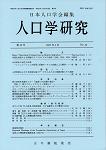Volume 52
Displaying 1-28 of 28 articles from this issue
- |<
- <
- 1
- >
- >|
Index
-
2016 Volume 52 Pages Cover1-
Published: 2016
Released on J-STAGE: November 16, 2017
Download PDF (1835K)
Presidential Address
-
Article type: Presidential Address
2016 Volume 52 Pages 1-5
Published: June 30, 2016
Released on J-STAGE: November 16, 2017
Download PDF (1357K)
Article
-
Article type: Article
2016 Volume 52 Pages 7-23
Published: 2016
Released on J-STAGE: November 16, 2017
Download PDF (2130K)
Note
-
Article type: Note
2016 Volume 52 Pages 25-37
Published: 2016
Released on J-STAGE: November 16, 2017
Download PDF (1476K) -
Article type: Note
2016 Volume 52 Pages 39-53
Published: 2016
Released on J-STAGE: November 16, 2017
Download PDF (2058K)
Scientific Information
-
Article type: Scientific Information
2016 Volume 52 Pages 55-62
Published: 2016
Released on J-STAGE: November 16, 2017
Download PDF (1834K) -
Article type: Scientific Information
2016 Volume 52 Pages 63-64
Published: 2016
Released on J-STAGE: November 16, 2017
Download PDF (1347K) -
Article type: Scientific Information
2016 Volume 52 Pages 65-70
Published: 2016
Released on J-STAGE: November 16, 2017
Download PDF (1363K) -
Article type: Scientific Information
2016 Volume 52 Pages 71-79
Published: 2016
Released on J-STAGE: November 16, 2017
Download PDF (1371K) -
Article type: Scientific Information
2016 Volume 52 Pages 81-88
Published: 2016
Released on J-STAGE: November 16, 2017
Download PDF (1375K)
Book Reviews
-
Article type: Book Review
2016 Volume 52 Pages 89-91
Published: 2016
Released on J-STAGE: November 16, 2017
Download PDF (1350K) -
Article type: Book Review
2016 Volume 52 Pages 92-95
Published: 2016
Released on J-STAGE: November 16, 2017
Download PDF (1371K) -
Article type: Book Review
2016 Volume 52 Pages 96-98
Published: 2016
Released on J-STAGE: November 16, 2017
Download PDF (1352K) -
Article type: Book Review
2016 Volume 52 Pages 99-104
Published: 2016
Released on J-STAGE: November 16, 2017
Download PDF (1385K) -
Article type: Book Review
2016 Volume 52 Pages 105-108
Published: 2016
Released on J-STAGE: November 16, 2017
Download PDF (1351K) -
Article type: Book Review
2016 Volume 52 Pages 109-111
Published: 2016
Released on J-STAGE: November 16, 2017
Download PDF (1680K) -
Article type: Book Review
2016 Volume 52 Pages 112-114
Published: 2016
Released on J-STAGE: November 16, 2017
Download PDF (1353K) -
Article type: Book Review
2016 Volume 52 Pages 115-118
Published: 2016
Released on J-STAGE: November 16, 2017
Download PDF (1352K) -
Article type: Short Reviews
2016 Volume 52 Pages 119-131
Published: 2016
Released on J-STAGE: November 16, 2017
Download PDF (1403K)
PAJ Information
-
Article type: PAJ Information
2016 Volume 52 Pages 132-142
Published: 2016
Released on J-STAGE: November 16, 2017
Download PDF (1370K) -
Article type: Regional Meetings of the Population Association of Japan
2016 Volume 52 Pages 143-148
Published: 2016
Released on J-STAGE: November 16, 2017
Download PDF (1360K) -
Article type: Regional Meetings of the Population Association of Japan
2016 Volume 52 Pages 149-154
Published: 2016
Released on J-STAGE: November 16, 2017
Download PDF (1730K) -
Article type: Regional Meetings of the Population Association of Japan
2016 Volume 52 Pages 154-155
Published: 2016
Released on J-STAGE: November 16, 2017
Download PDF (1385K) -
Article type: Regional Meetings of the Population Association of Japan
2016 Volume 52 Pages 156-161
Published: 2016
Released on J-STAGE: November 16, 2017
Download PDF (1362K) -
Article type: Regional Meetings of the Population Association of Japan
2016 Volume 52 Pages 161-163
Published: 2016
Released on J-STAGE: November 16, 2017
Download PDF (1352K) -
2016 Volume 52 Pages 164-168
Published: 2016
Released on J-STAGE: November 16, 2017
Download PDF (1362K) -
2016 Volume 52 Pages 169-174
Published: 2016
Released on J-STAGE: November 16, 2017
Download PDF (1357K) -
2016 Volume 52 Pages Cover2-
Published: 2016
Released on J-STAGE: November 16, 2017
Download PDF (1791K)
- |<
- <
- 1
- >
- >|
